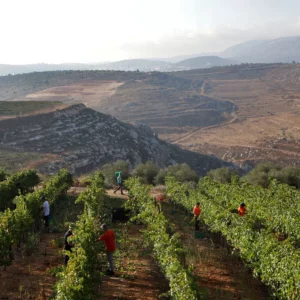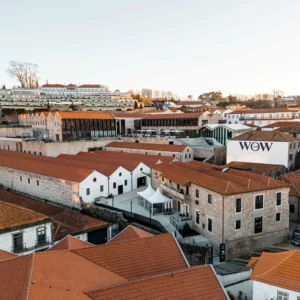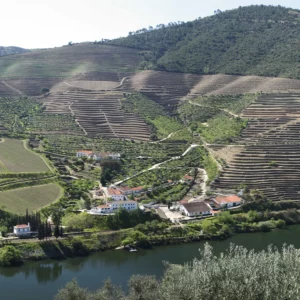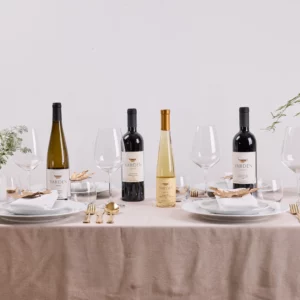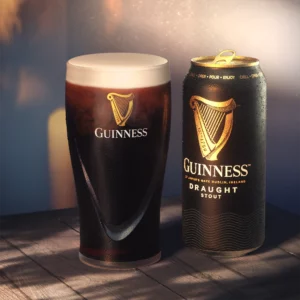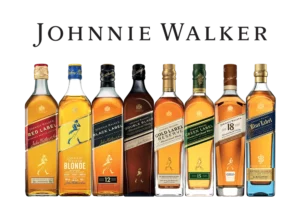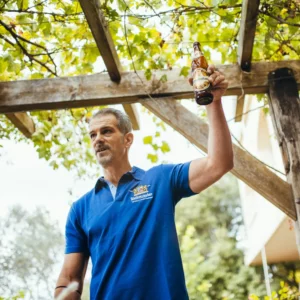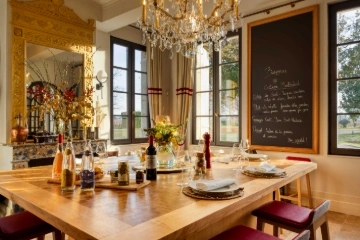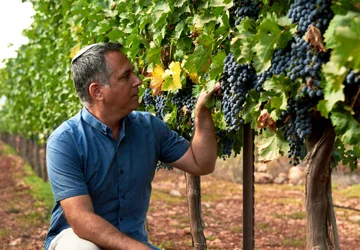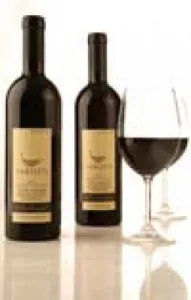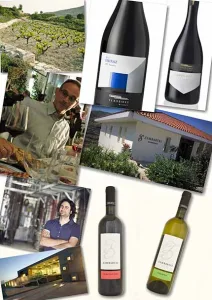I was recently set an interesting challenge. Name five wines to represent your wine career. Sitting at home, feeling self-indulgent and nostalgic in equal measure, I have decided to have a go.
My earliest wine memory was drinking Palwin as a child during Passover Seder Nights. Sweet and alcoholic, I thought it was a naughty treat. To most Brits, Palwin seemed almost to be a part of Judaism itself! The first wine I purchased was a bland brand called Hirondelle, which was cheap, inoffensive and a good beginner’s wine. The first truly memorable wine I drank was Château Mouton Rothschild 1971. It was my wine epiphany and my introduction to the world of fine wines.
I began my career by joining Bass Charrington, which specialized in brewing, retailing and hotels. It was the UK’s largest brewery and a ‘total beverage’ company, which produced, marketed or imported beer, wines, spirits and soft drinks. Initially the most prominent wines I worked with were big brands like Mateus Rosé and Mouton Cadet. Both Sogrape Vinhos and Baron Philippe de Rothschild SA were represented by the wine shipper owned by Bass. Pubs that merited a wine list would normally list both of them. Bass Charrington also owned Château Lascombes, from Margaux in Bordeaux, which they purchased in 1971. As I graduated from beer to wine, the importance of Château Lascombes to the group became clear.
At prestigious dinners held in cellars under Regent Street in London, invariably Château Lascombes was one of the high-profile wines being poured. Customers were taken on incentive trips to tour and dine there, and the lucky ones were able to stay overnight. Furthermore, when I compiled wine lists for the Bass Hotels Group, Lascombes always had pride of place. Therefore, ultimately Château Lascombes is the wine that most symbolized my time at Bass Charrington. Overall, it has to be said that the brewery ownership of Lascombes was not marked by glory, but the roots of the revival did begin in 1986 with a winery refurbishment & upgrade, and an appointment of a new Technical Director. However, after being sold by Bass in 2001, the winery then had the finance to make substantial changes. Since then, the winery has made giant leaps forward under the new management. It is now making its best wines for many decades. Thirty years after my last visit, I was delighted to visit the Château again and was especially touched when they kindly opened a sixty-year old wine from the year I was born.
I moved to Israel and began to focus on Israeli wines. I had started working with wines from all over the world and only later specialized in Israel. Most people do it the opposite way. In the 1990’s I worked for the Golan Heights Winery, yet I was already familiar with their wines in the UK. Yarden Katzrin, the first super deluxe prestige wine and Yarden Blanc de Blancs, a traditional method sparkling wine, were examples of iconic wines launched when I was there. Yet the wine that to me symbolizes my time with the Golan is undoubtedly the Yarden Cabernet Sauvignon. This is the true ambassador of not only the Golan Heights Winery, but also of the Israeli wine industry as a whole. It is arguably Israel’s most awarded wine. Yarden Cabernet Sauvignon is made from fruit grown on the Golan, a high altitude, volcanic plateau. Over the years, I have got to know the Golan Heights Winery intimately, from a number of angles, as a wine buyer, customer, competitor, winery representative, wine journalist and wine consultant. The winery first came to the attention of the international wine trade in 1987, when Yarden Cabernet Sauvignon 1984 won a Gold Medal and Trophy at the IWSC in London. It was then a sensational result. The first vintage I worked with was the 1985, when I was still in the UK. The current vintage is the 2016.
I worked for Carmel Winery in two periods. The wine I remember from my first posting there, was the Carmel Special Reserve 1976 and 1979. By the time I arrived, the wines had a legendary status and were still drinking well. However instead, I have decided to select two wines from my second period at Carmel, simply because I was more involved in their development. My first day back at Carmel was December 12th 2002 and it was spent at what was then referred to as Ramat Arad Winery at Tel Arad. On that very day it was decided to change the name to Yatir Winery. Carmel owned 50% of the winery then, but led the way in all marketing decisions. We chose the beautiful, Japanese style logo designed by Baruch Naeh and the first wines from the 2001 vintage were launched in 2004. In 2007, Yatir Forest became the first Israeli, kosher or Eastern Mediterranean wine to score 93 points in Robert Parker’s Wine Advocate. I was the first to see the scores on a Friday night, and had to wait until after Shabbat to ring the CEO with the news. Yatir Winery remains one of Israel’s leading small wineries, and being based in the Negev, it is Israel’s leading winery in the south. Yatir Forest is a blend mainly of Cabernet Sauvignon, usually with Petit Verdot, coming from vineyards in Israel’s largest planted forest. It is one of the wines I will most remember from my time at Carmel.
The second is Carmel Limited Edition. Though the Kayoumi Vineyard Shiraz, with its Trophy in the Decanter World Wine Awards runs it close. The new winemaker inherited the base wines from the 2002 vintage and made a Bordeaux blend, which was labelled as part of an existing series. At Vinexpo, I showed it to Howard Goldberg of the New York Times, who said it was the best wine he had had from Israel. So, a new prestige wine was made in 2003 and launched in 2006. It was called Carmel Limited Edition. I was heavily involved of course. I remember the concern of pricing it high, because it was a new step for Carmel. Carmel was always considered the mass market winery of Israel, and this was part of an attempt to upgrade the quality and image. Ultimately Limited Edition became regarded as perhaps Carmel’s finest wine in over 100 years! I always thought it was of higher quality than the recognition it received would suggest. It showed more elegance than many of the more famous Bordeaux style blends made in Israel. An early drawing of the original Rishon Le Zion Cellars building was on the label. This was the largest winery in Israel from 1990 to 2010 and though now closed and abandoned, it remains an important part of our wine history.
Towards the end of my time at Carmel, the owner of Kerem Montefiore contacted me. Seduced by the fact that it was my family name, and in essence the winery story was my family story, I of course could not resist helping. In the end I designed the labels and wrote the written material. It was an innovative start-up, négociant winery and the wines were purposefully good food wines instead of trophy, competition wines. The wines were launched in 2013. In 2017 I severed all contact with the winery for wine reasons and it was only later I discovered other problems. However, it started so well, that I want to choose one wine to remind me of the successful early days. This is the Montefiore Red, an entry level blend of Malbec, Shiraz and Petite Sirah, grown in the Judean Foothills. It was Mediterranean style blend and was fruity, full of chewy flavor with a refreshing finish. It received plenty of recognition during its short life, and was a good example of a good drinking wine, not aged in oak, at a very reasonable price. There is a reproduction of the Montefiore family coat of arms on the label. No wonder I have to have one of their wines on the list.
That is five wines, but because I am writing this and can set the rules, I want to add two more. I was involved with two incarnations of Handcrafted Wines of Israel. I founded the original consortium to market wines in export markets in 2003. The new version was set up by friend and colleague Oded Shoham, over a decade later, this time to market wines within Israel. The only winery which was in both consortiums was Margalit Winery, which was founded in 1989, the very year I came to Israel. I have followed their progress since then. I remember going to their open day when they were still based near the Bilu junction in Rehovot. The wine I remember from the early days was the Margalit Cabernet Sauvignon, but it was superseded by Margalit Enigma, a blend of mainly Cabernet and Merlot, from the Kadita vineyard in the Upper Galilee. Its release coincided with the launch of the first consortium. So, I have chosen this to represent my time with both the original and new Handcrafted Wines of Israel. Margalit Winery produced the first cult wine in Israel. They remain one of the leading wineries in Israel, and if we are talking about Bordeaux varieties, they are amongst the very best.
In the last four years, I became a wine consultant. ‘Adam Montefiore Wine Consultancy’ offers advice to wineries, retailers, hotels, restaurants and private individuals. My clients include some of the leading wineries and retailers in the country. Therefore, it will be a surprise that the wine I have chosen to represent my new career is from Jerusalem Vineyard Winery. This was a historic winery founded in 1951 by the Mendelson and Shor families, which was originally named Shimshon Winery and was later renamed ‘Jerusalem’. Both families had made wine in the Old City of Jerusalem pre-State, and this is the same Shor family which has made wine since 1848. The Jerusalem Vineyard Winery decided to convert the Montefiore Windmill, in the Mishkenot Sha’ananim – Yemin Moshe neighborhood, into a winery tasting room and visitors center. This is a place where my family has a strong emotional and historical connection. Hence my initial interest. To commemorate this, they decided to make a range of boutique wines, in small quantities. My ears pricked up at this opportunity and I was pleased to assist and advise in the creation of the Montefiore Windmill label, including tasting the embryonic wines with the winemaker. The wine which I have therefore chosen to represent my new role as a consultant is the Montefiore Windmill Yemin Moshe, a blend of Cabernet Sauvignon, Merlot and Petit Verdot, from the Central Mountains region. The label shows a drawing of the Windmill, built in 1857 by Sir Moses Montefiore. It has become one of the iconic buildings of the Jerusalem skyline.
Therefore, the wines I have chosen to represent my past are Château Lascombes, Yarden Cabernet Sauvignon, Yatir Forest, Carmel Limited Edition and Montefiore Red. To these, I have added Margalit Enigma and Montefiore Windmill Yemin Moshe. It is a personal choice. These are by no means the best wines I have tasted, nor are they necessarily associated with the most memorable moments. They do however, each represent a place or a project and a distinct period of time in my working life. They also represent certain milestones which span the history of Israeli wine. The Shor family opened the first winery in the Old City of Jerusalem in 1848. Carmel was founded from 1882 onwards, which was Israel’s first commercial winery and heralded the founding of a modern wine industry. The Golan Heights Winery (established 1983) were the pioneers that started the quality wine revolution. Margalit Winery (1989) was the first in the boutique winery revolution. As far as the kosher category is concerned, Château Lascombes produced two kosher wines for the first time in 2015. Being a Second Growth (or ‘Deuxième Grand Cru Classé’), it became the highest classified Bordeaux wine from the 1855 classification (along with Léoville Poyferré) to make a kosher cuvée.
Seven wines from too many years to mention. A well-known restaurateur once advised me “never boast how many years you have been working. Stop at twenty-five to thirty years, because if you go beyond that, people will begin to wonder why you are still here and not at home looking after the grandchildren.” So, without being too specific on dates, it is sufficient to say that these wines each provide me with special memories at different stages of a long career in the drinks industry and wine trade.
Adam Montefiore is currently CEO of Adam Montefiore Wine Consultancy, a partner in the Israel Wine Experience and the wine writer of the Jerusalem Post.




